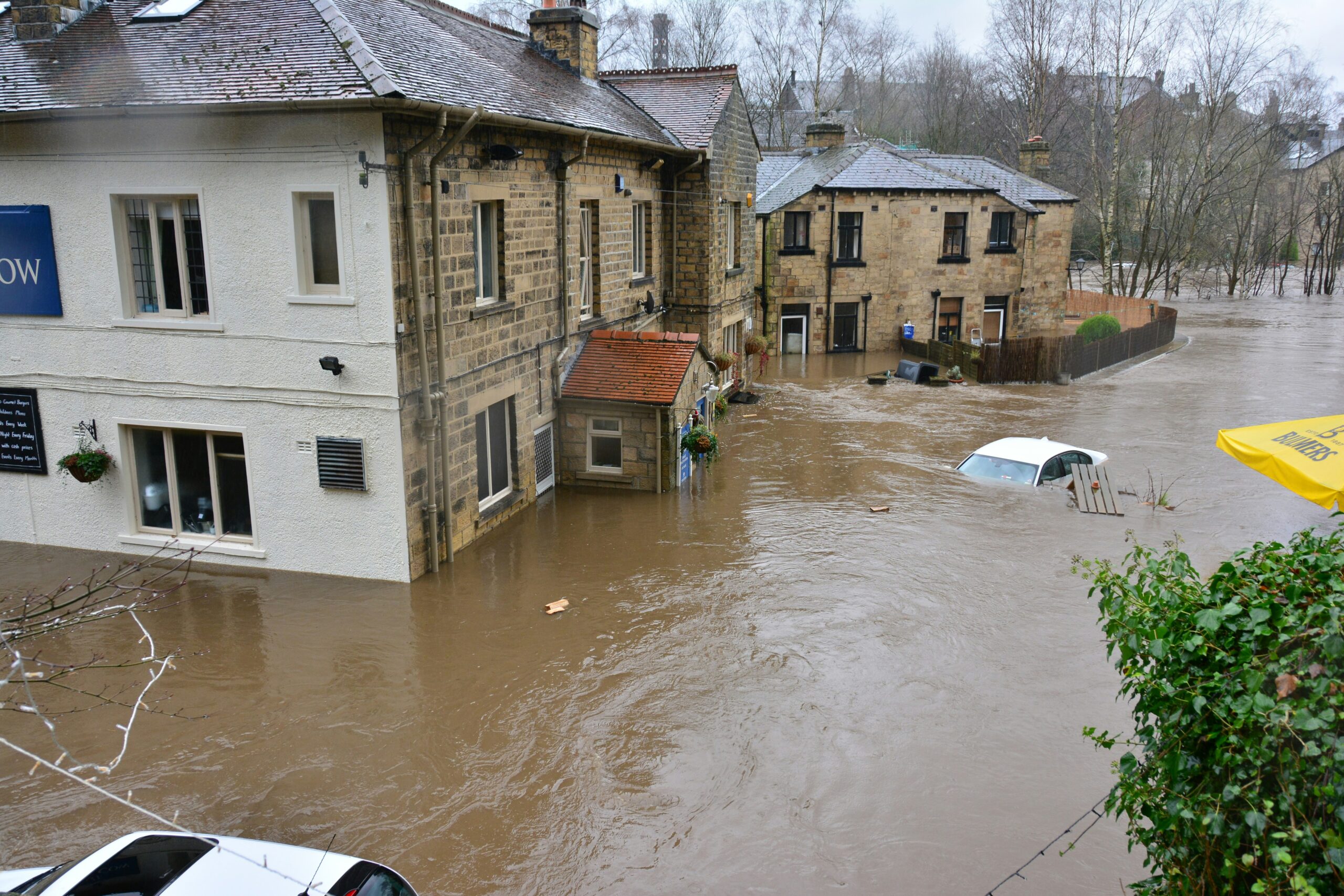Flooding can be a homeowner’s worst nightmare, especially if it damages your possessions or causes structural damage, but did you know heatwaves can also be just as damaging?
Here we look at everything you need to know about flooding, from preparing for one to what to do should water creep into your home, as well as whether heatwaves can cause subsidence.
How to know if you’re in a flood risk area
You can find out if your home is in a flood risk area by checking the government website, which uses the Environmental Agency’s flood maps to keep on top of the regions that are most affected by sudden downpours, reservoirs and burst riverbanks. The tool allows you to check for both long-term flooding risks and short-term alerts in your area. Alternatively, you can contact your local council.
You can use the interactive map to search by postcode, or the name of your village, town or city. If you’re thinking about buying a property in a specific area, it’s a handy tool to use to see if your future home could be affected by floods. Even if you are not in a high-risk flood area, you can still see what flood zone you come under to help prepare for any extreme weather conditions.
How to prepare for a flood
Once you have checked the interactive map and found that you are in a flood risk area, there are a number of ways you can prepare for such an occasion.
You should familiarise yourself with the government’s alert systems so you can track if a warning has been put in place for your area.
It’s also important to create an evacuation plan in the event of extreme floods, for both your family and pets, including whether you need to take any medication supplies with you. It’s a good idea to prepare an emergency kit in case you need to evacuate quickly. You should also inform your neighbours so they can act accordingly.
Items to include in your emergency kit should include drinking water, snacks, waterproof clothing, emergency contact numbers, a mobile phone charger, your insurance details and extra clothes.
Whilst preparing for what you need should be a priority, it’s just as important to make sure you have the right policy to cover your home in the event of a flood. We offer flood risk home insurance, which is designed to protect your home in the event of flooding and can cover your personal possessions too.
If you find yourself in the centre of a flood warning, you will need to act fast to help protect your home and your personal safety as much as possible. Start by shutting all windows and doors.
Take photos of your home before the flood hits so you can show your insurer what your property used to look like.
Next, you should move any vehicles you have to higher ground if possible and place any sentimental items you have upstairs or in the loft to help keep them away from the body of water.
What to do during a flood
If the flood is posing a threat to your life, you should call the emergency services immediately. Do not try to walk, run, swim or even attempt to drive through floodwater.
Floodwater is fast-flowing and can knock you over; just two feet alone will make your car float. You should try to avoid any contact with the body of water where you can and try to climb to the highest points of your home and wait for the emergency services to arrive.
The water can also be contaminated so if you are exposed, you will need to wash your hands and clothes if possible.
What to do after a property has flooded
If you are in the horrible position where your home has been flooded, you will need to call your insurer to let them know of the damage caused. Just as before the flood hit, you will need to take photos of what your home looks like now.
You should dispose of any food that has been in contact with the water, move items away from areas affected by damp, turn your gas, electric and water off if it’s safe to do so and only drink water from bottles that are unaffected. Alternatively, you can boil tap water as a last resort if your water company says this is okay until you are told it’s safe to drink straight from the tap in your area.
If you can, it’s best to arrange alternative accommodation to prevent any further harm to yourself and those you live with from the damp and floodwater, which might be contaminated.
It’s worth visiting the National Flood Forum for further advice if you have been affected by a flood.
Can subsidence be caused by flooding or a heatwave?
The increased frequency of extreme weather in the UK is becoming more common with climate change, making subsidence a growing concern for UK homeowners. Subsidence-related claims surged by as much as 400% in 2022, with payouts projected to reach £1.9 billion by 2030.
Subsidence can be caused by flooding, as floodwater can wash away the soil that is supporting your home’s foundation.
This loss of support can lead to parts of the foundation sinking or settling. Floods can saturate loosely packed soil which can then compact under the structure, causing damage and leading to your home’s structure becoming uneven.
Floodwaters can undermine shallow or poorly constructed foundations, especially in older homes, and can result in sloping floors, ripples in your wallpaper, cracks in walls and sticking windows and doors. Although these are telltale signs, it can sometimes be hard to spot how subsidence has affected your home.
It’s not just wet weather that can cause subsidence. Hot and dry conditions, which the UK typically gets in June and July can also cause this issue. Flash-flooding has also become more common following dry summers.
This is because dry spells and heatwaves dry out soil which leads to shrinkage, cracks and uneven settlement in the ground beneath your home. If you live near trees and vegetation sites they can become dehydrated, exacerbating the effects.
Older homes that have been built on clay, usually found in the south of England, are particularly vulnerable to subsidence. This is due to expansive clay being used to build homes in this area, which swells when wet and shrinks when dry.
After a flood, clay will often swell, then as it dries out it will contract, leading to uneven subsidence over time.
Subsidence can happen over a number of years, and may not be apparent immediately after your home has been flooded so it’s important that you look out for the warning signs.
Get flood insurance from Adrian Flux
Floods are becoming increasingly common in the UK, and we understand the worry and stress they can cause homeowners. That’s why we’re one of the only insurance brokers in the UK to offer flood risk home insurance policies for areas with a moderate to high risk of flooding.
Even if the property has been flooded before, we strive to find an insurance deal that’s right for you. Call 0800 369 8590 for a quick and easy home insurance quote or book a callback at a time that suits you
Publisher: Source link









![Capital One Venture X 100K Bonus with $10K Spend [Ending Jan. 5]](https://www.theamericangenie.com/wp-content/uploads/2025/12/Capital-One-Venture-X-100K-Bonus-with-10K-Spend-Ending.png)

